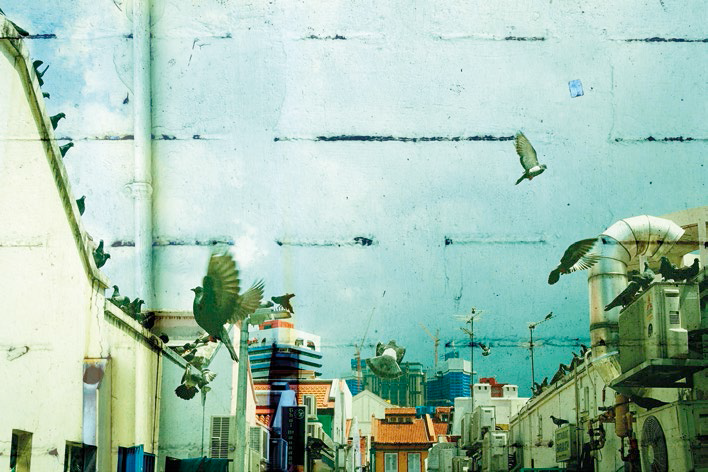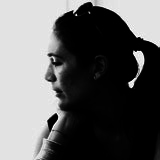Singapore may be a small island – a mere red dot – but are you sure you’ve seen all of her? Celebrating our nation’s charms and quirks, we spotlight a group of photographers who capture Singapore’s people and places in inspired ways. From fleeting personal moments, to quiet unappreciated spaces, they provide a different (and surprising) perspective of our city state.


Singapore may be a small island – a mere red dot – but are you sure you’ve seen all of her? Celebrating our nation’s charms and quirks, we spotlight a group of photographers who capture Singapore’s people and places in inspired ways. From fleeting personal moments, to quiet unappreciated spaces, they provide a different (and surprising) perspective of our city state.

Can you guess where Instagrammer Yafiq Yusman captured this photo? Hint: It’s in Harbourfront!



LEFT
This Boeing 737 was parked at ITE College Central, for some experiental learning.
LEFT, ABOVE
The Chinese Garden, located in Jurong East. Singapore is, indeed, a green city.
OPPOSITE
Paved roads, lush greenery and the blue waters converge harmoniously in Sentosa.

There is a reason why scale models are so intriguing – most of us rarely have a bird’seye view of things. Joel’s spectacular aerial shots give us a taste of bite-sized Singapore, and the ingenuity of our landscape architects. The occupational therapy student and drone photographer took up photography four years ago, and has since earned praise for his photography prowess.
How does using a drone challenge your perspective?
It gives you an alternative perspective to ordinary, everyday places. You get to appreciate the planning and design of the buildings, and how every detail – from the trees to the pavements – comes together.
Tell us how you work with a drone.
I’ll scout for a good location, one where my drone can launch and land safely. Next, I ensure the drone’s compass and GPS signal are working fine, and that weather conditions – such as directions of the sun and wind – are optimal. Then, I follow the flight plan I’ve crafted.
What has photographing Singapore taught you?
That it is a beautiful place to live in, despite not having natural landscapes. There are futuristic-looking buildings, but also lush gardens and preserved heritage sites. Our multireligious society also means we can have a mosque, church, and temple in one place!
What do you do when you don’t get a good shot?
Bite the bullet and move on to a better spot or angle. Photography takes practice, as well as trial and error. It’s important to keep an open mind.
See his work at www.instagram.com/idroneman.

Using the iPhone makes it easy for Beng Chia to go into stealth mode – and when he’s taking street photography, he needs that edge. The graphic designer, who also shoots using Fujifilm’s Instax, and mirrorless cameras, is known for his raw and honest depictions of Singapore and her people. It’s his way of showing the world that the city is not a postcard-perfect place.
Your photos are gritty and honest.
I work in the advertising industry, so I see a lot of things that are perfect and posed. Singapore is not one-dimensional, and there is a grittiness here that adds flavour to our country. What attracts me is human behaviour. A picture of an elderly man digging his nose may be disgusting, but it’s a natural thing to do. When someone is in deep thought or in a rush – these are the moments I try to capture.
Do you get into trouble sometimes? Yes. Just recently, I took a close-up photo, with flash, of an old woman crossing the road. She was fanning herself, and it was an interesting shot! She smacked me with the fan and scolded me in Cantonese (laughs). I apologised and walked away.
Why do you think it’s important to photograph Singapore?
These photos of the mundane, everyday life may not mean much now, but it might to the younger generation. Unfortunately, these archives also show interesting places that have already gone, or are going, such as the Thieves Market in Sungei Road.
What advice would you give tourists?
Go to the heartland. That’s where the community and people are.
See Beng Chia’s work at www.instagram.com/aikbengchia.
BELOW
A lone Chinese lantern, spotted near the Malay Heritage Centre.
BOTTOM
A man at the window of Arab Street’s Sultan Mosque.
RIGHT
A game of HDB hide-and-seek, captured on camera.
OPPOSITE, BOTTOM
Here’s a sight many Singaporeans are familiar with – chess-playing uncles!







LEFT
Can you tell the clouds from the peeling window shutters, in this piece called Singapore Lines?
LEFT, BELOW
Though Esther photographs at touristy spots like Arab Street and Little India, she prefers to explore the routes less travelled.
BELOW
The Singapore Uncle series is about contentment. Esther likes to interact with her subjects, to ensure they have a good moment together.
OPPOSITE
This composite of Esther’s trip to Little India is named Show Me The Way, a nod to the butterfly in the picture.




Esther is a Dutch expat and private yoga teacher. Her sister and father are professional photographers, so it’s no surprise that she has a unique outlook on our multifaceted city. Avoiding the main streets and choosing to explore the alleyways, Esther has produced a collection of photo mash-ups, depicting the nooks and crannies, and sometimes intimate aspects, of Singapore.
You describe your photographs as “quiet”. What does that mean?
As a yoga teacher, I try to instil the same feel and stillness of the poses, in my photos. The layered images are my signature, but it is also the atmosphere they create that people like, and can relate to. Singapore is a busy city, but it can be quiet as well.
What side of Singapore do you try to show?
The small things. The average person or place you pass by every day without a thought. These people, buildings, and even walls, have a story – I’m just showing you a little glimpse of it.
How do you put your work together?
I prefer scruffy details and faded colours so, to avoid taking away these imperfections from my photos, I hardly edit them. The challenging part is combining two photos, because they need to fit well naturally.
You’ve been here almost eight years. What do you love about Singapore?
The diversity, both in food and culture. Hearing five different languages in one hour is a luxury to me. My kids love it, too; they even ask for chicken rice when they are under the weather. That’s definitely not Dutch!
See Esther’s work at www.esthervanvechgel.com.

Darren has been honing his craft since he was 14, but the accomplished architecture photographer recently found recognition here (and internationally) for his striking composite image of lightning over the estate of Sembawang. The shutterbug is known for his bird’s-eye views of local buildings and housing estates – a perspective not seen by many. This reflects the advice he gives to young photographers, which is to capture the “ordinary and over-photographed in a way that has not been done before”.
Why architecture?
Although I do portraitures, I much prefer the challenge of working with weather and daylight (or lack thereof) when capturing architecture shots. Studying how light falls on a building is something I’ve come to love and look forward to.
Name some of your favourite spots to photograph here.
Anywhere with a high vantage point is good; many of these spots are publicly accessible through HDB stairwells and corridors, which are safe and free to use.
What has photographing Singapore taught you?
That we are losing too many buildings from our past, such as those from the 1960s to 1970s. This has also led me to take more photographs, because once the buildings are gone, they can’t be brought back.
What’s uniquely Singaporean about you?
Well, I grew up in a HDB flat with a long common corridor – I suppose that makes me a true blue Singaporean, in a way!
See Darren’s work at www.instagram.com/darrensohphoto.
BOTTOM
“Long common corridors are becoming uncommon, now that residents want privacy. New blocks have only four to eight units per floor,” says Darren.
BELOW
The famous lightning photo, which took Darren over an hour to photograph. He had been waiting for years to catch a moment like this on camera!
(OPPOSITE) TOP
From the top, the atrium at Waterloo Centre looks like an 8-bit graphic.
BOTTOM
Kim Tian Road and Jalan Membina remain vibrant at night.






LEFT
This spiral staircase in the Chinese Gardens is the perfect spot for a quirky shot!
BOTTOM
You don’t need to go to far-flung places for a good shot. This was taken at Ngee Ann Polytechnic.
OPPOSITE
Yais took a fellow Instagrammer, Nathalie Hill from Paris, to the Singapore Institute of Technology when she was in town.


You might not recognise the places that twins Yafiq (pictured right) and Yais Yusman photograph, although they are in Singapore! The brothers travel around the island to capture architecture shots from unconventional perspectives, prompting their followers to see the environment around them in a different way.
What’s your relationship with each other like?
Yais: We are overly attached twins; we miss each other even when we are apart for a few days, especially when I fly overseas for work! (Laughs) As for photography, we both do creative architecture shots, but I tend to add a human element as it takes the mood of the photo to a different level.
Favourite spots to photograph?
Yais: The Victoria Theatre and Concert Hall. It’s small, but there is a lot to photograph. Yafiq: I love the spiral carpark at Mandai Connection, which I recently discovered.
Why do you think it’s important to photograph Singapore and its buildings?
Yafiq: Singapore is ever-changing, so it’s good to document it through photography; and shooting it from unexpected angles encourages people to appreciate the details. It’s also to showcase our tiny country on an international platform such as Instagram.
How would you describe the city’s landscape?
Yais: It’s a concrete jungle, and it looks like Lego blocks of different shapes and sizes. I’m talking about Singapore’s public housing landscape!
See their work at www.instagram.com/_yafiqyusman_ and www.instagram.com/_yaisyusman_.























